Hot stamping foil slitting machines play a key role in the entire hot stamping process, and their optimization can significantly increase efficiency, reduce costs, and improve the quality of the finished product. Here are the key points of how the slitter optimizes the whole process from coil to finished product:
1. Optimization of raw material stages
• Precise slitting: According to the needs of hot stamping patterns, the wide web is cut into specific widths (such as 10mm-1000mm) to reduce material waste. High-precision slitting (±0.1mm) avoids hot stamping defects caused by edge burrs.
• Tension control: Constant tension slitting system is adopted to ensure that the foil has no tensile deformation, maintain the uniformity of the coating (such as metal layer, adhesive layer), and avoid color difference or uneven adhesion during hot stamping.
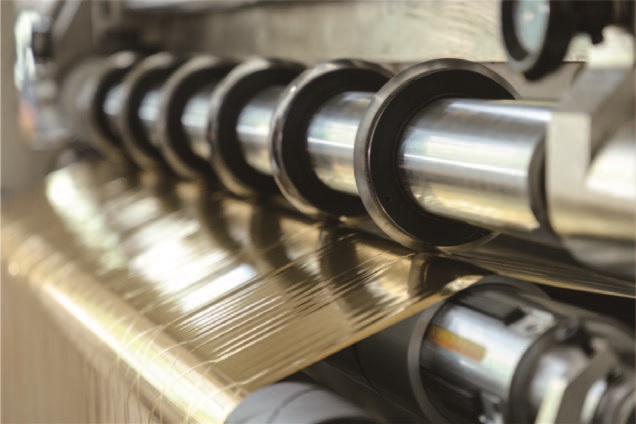
2. Process adaptability is improved
• Slitting parameter matching: Adjust the slitting speed (50-300m/min), tool angle (such as 30° round knife) and pressure according to the hot stamping material (PET, OPP, metal foil, etc.) to avoid static electricity or coating peeling during slitting.
• Splice handling: Use ultrasonic welding or glueless butt technology to reduce the splice thickness of the slitted coil and prevent foil jamming or uneven pressure in the hot stamping machine.
3. Optimization of production process efficiency
• Automatic integration: The slitting machine is linked with the MES system to automatically receive order specifications (such as slitting width and length), realize unmanned slitting, and shorten the order change time to 5 minutes.
• Core matching: Adapts to the reel specifications of the hot stamping machine (e.g. 1 inch/3 inch core) after slitting, reducing roll change downtime.
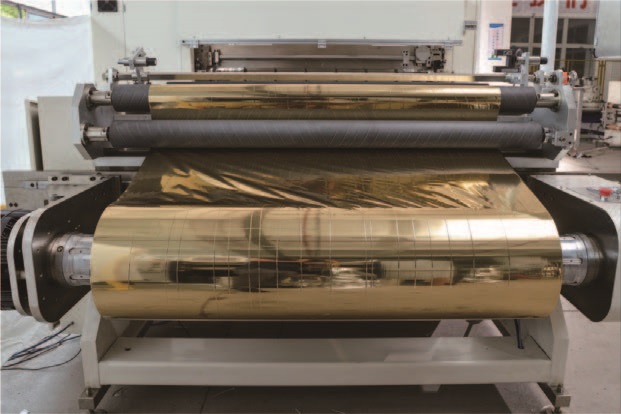
4. Key points of quality control
• On-line detection: Detect foil surface defects (scratches, bubbles) by CCD during slitting, mark and reject defective sections in real time, and the defective rate can be reduced to less than 0.5%.
• Edge uniformity: The edge roughness is controlled at Ra≤0.2μm after slitting, so as to avoid flash or adhesion during hot stamping.
5. Collaborative optimization of hot stamping links
• Flexible adjustment of slitting width: for complex patterns (such as fine lines or large area bronzing), slitting of multi-specification narrow foil rolls (such as 5mm/20mm parallel slitting) can improve the material utilization rate by more than 15%.
• Static Elimination: After slitting, an ionic air bar is added to remove static electricity to prevent uneven foil adsorption or dust pollution during hot stamping.
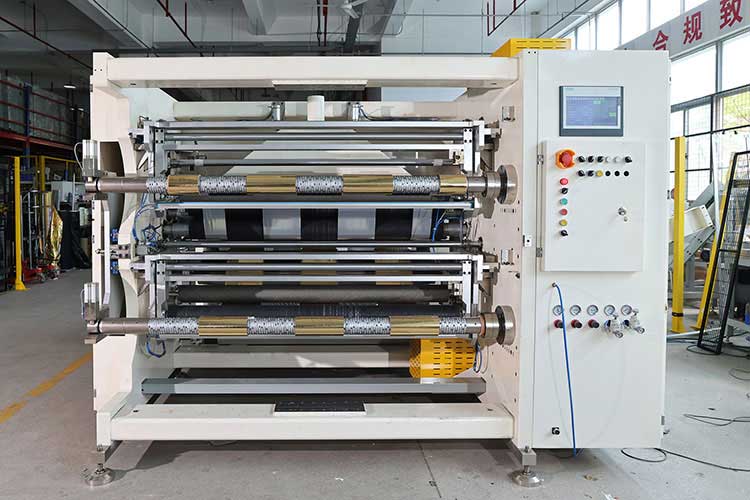
6. Cost and sustainability
• Scrap recycling: Slitting scraps are recycled through a centralized collection system, and the recycling rate of metal foils can reach more than 90%.
• Energy-saving design: The servo-driven slitting machine saves 30% energy compared with the traditional model, reducing long-term operating costs.
7. Downstream process adaptation
• Pre-applied adhesive slitting: For the cold stamping process, the activity of the adhesive layer is protected during slitting to ensure the adhesion of subsequent UV curing.
• Humidity control: Keep 40-60%RH in the slitting environment to prevent wrinkles caused by moisture absorption.
Case effect
By optimizing the slitting machine (installing laser width measurement + automatic deviation correction), the hot stamping foil loss rate has been reduced from 8% to 3%, and the hot stamping speed has been increased by 20% (up to 120 m/min), and the registration error of hot stamping pattern has ≤ 0.1mm due to the improvement of slitting accuracy.
Through the fine control of the slitter, the whole process has realized the closed-loop optimization from "coil management" to "finished product quality", especially in high value-added products (such as cigarette packs, luxury packaging).
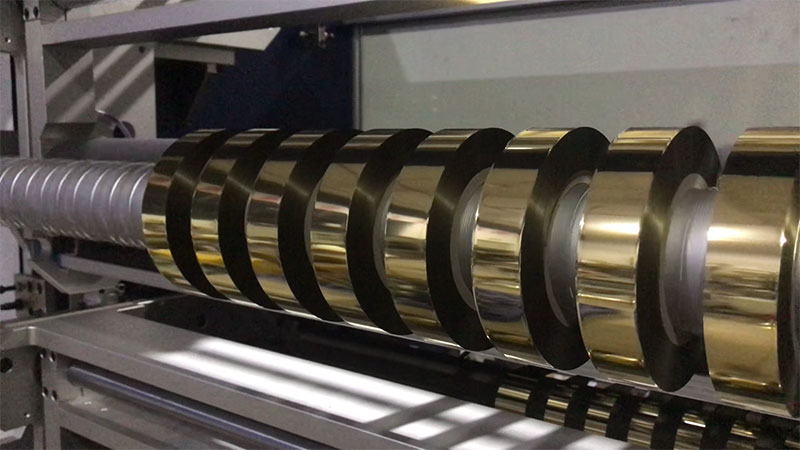
An advanced slitting machine is like a powerful "invisible heart", continuously delivering precise, efficient, and healthy blood to the printing plant's hot stamping capabilities.
08. December, 2025
These devices integrate precision machinery, automatic control, and intelligent inspection technology to achieve fully automated processing from coils to finished products.
08. December, 2025
The core advantage of this "secret weapon" is its high intelligence and precise control capabilities:
03. December, 2025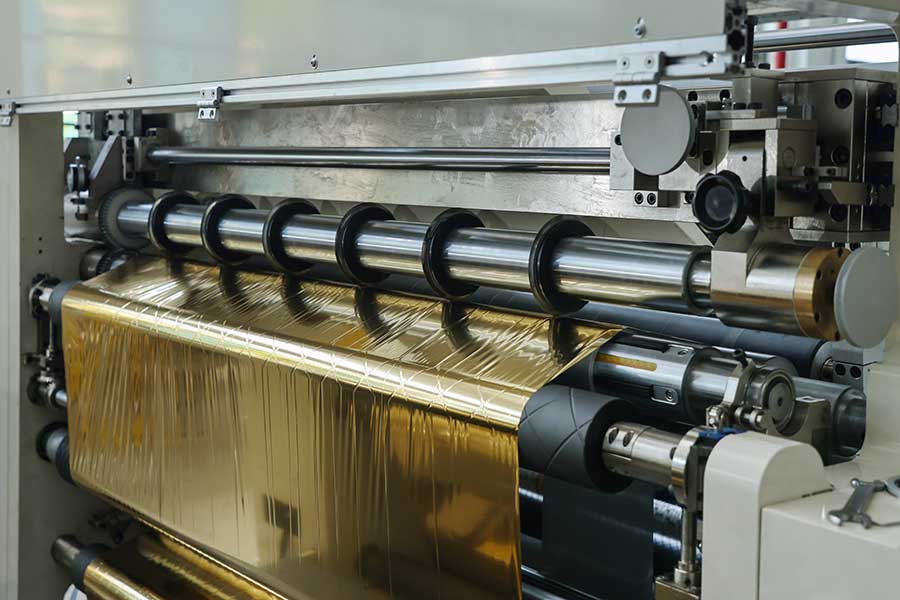
The foil stamping slitting machine, with its precise blade, is cutting a more refined and responsible future.
03. December, 2025
Choosing a suitable hot stamping foil slitting machine can not only improve production efficiency, but also significantly reduce material loss.
03. December, 2025